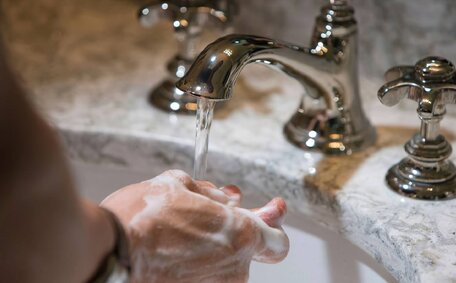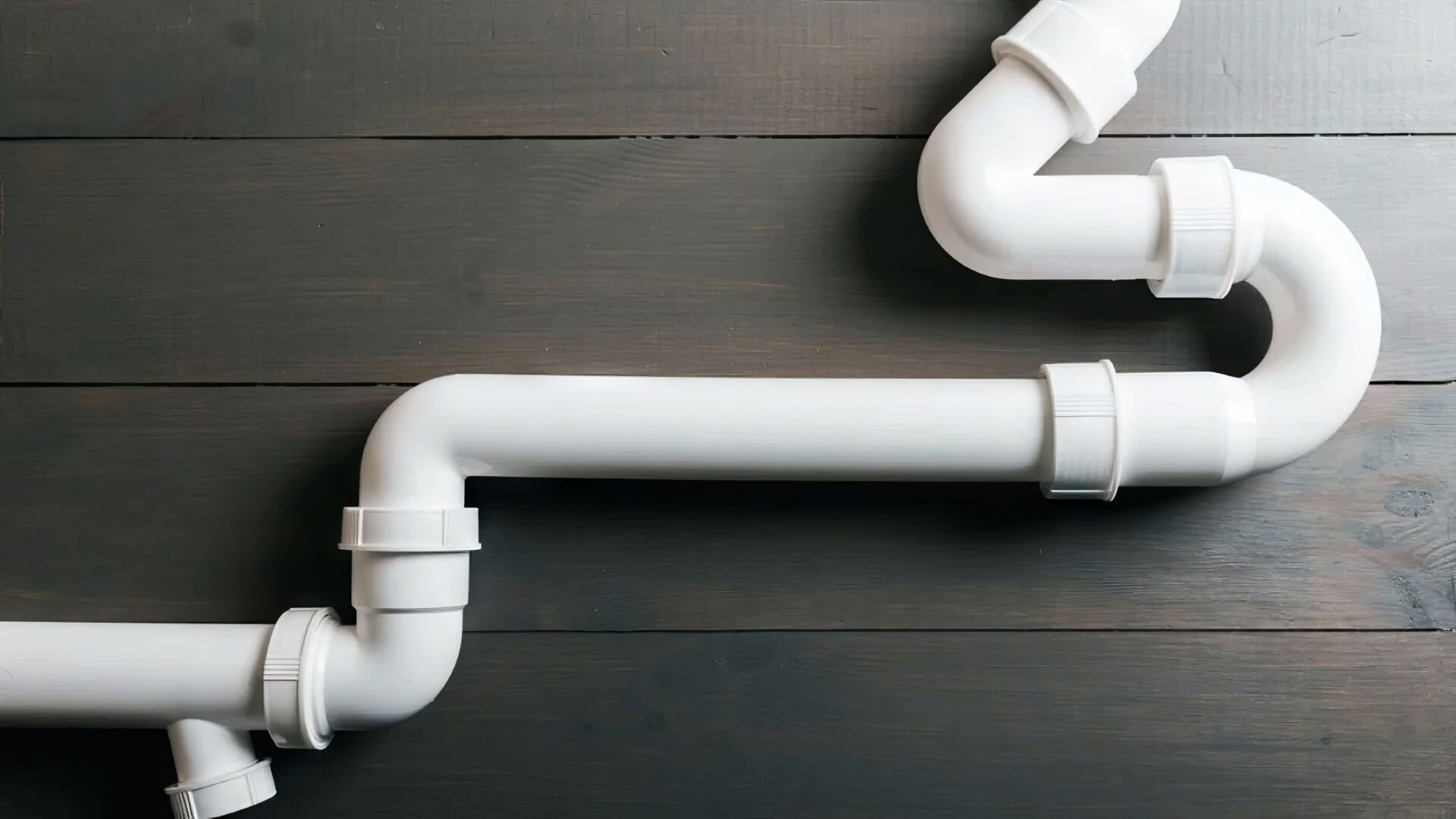Common Causes of Toilet Leaks
Several factors contribute to toilet leaks, most commonly due to faults in the toilet’s internal mechanisms. One of the most prevalent is a faulty flapper valve, which fails to form a tight seal and allows water to flow into bowl when no one is flushing, continuously filling it. This silent leak can waste hundreds of litres per day undetected; the water quietly trickles into toilet bowl.
Common toilet leaks often indicate larger plumbing issues, stemming from faults in the tank, water supply line, fill valve, overflow tube, wax ring, couplings, bolts, or the cistern itself. Leaks can be caused by sediment buildup, corrosion, cracks, or loose connections. High water pressure placing excess strain on components can also lead to leaks and noise in any plumbing when used over time.
A blocked vent stack causes syphoning and prevents proper drainage, allowing water to leak between your toilet cistern and bowl, possibly affecting your household plumbing. Moreover, If bolts securing the tank are loose or have deteriorated, loud noise from water leaking from the bottom tank through gaps is a likely outcome, often resulting in sounds that signal your toilet makes noise unexpectedly.
Toilet Components That Cause Leaks
Several key toilet components are often the culprit behind leaks, especially as they wear out over years of use.
Substituting a faulty fill valve is frequently a straightforward and cost-effective solution for a water leak in the toilet.
A flapper that becomes stiff or misshapen over time may fail to seal properly against the flush valve seat, necessitating replacement to prevent leaks. The toilet flapper has its own rubber seal that prevents water from flowing into the bowl when the toilet isn’t being flushed.
The top fill valve, or inlet valve, controls how your toilet’s tank refills after a flush. Sediment buildup and wear on the seals and the float cup can lead to a continuous running toilet and overflow into the overflow tube. Tweaking or substituting the toilet fill valve assembly can mend leaks that might be causing water to continuously run into overflow issues.
Other common problem areas include deteriorated tank bolts that cause leaks through the tank-bowl connection, cracks in the cistern affecting the wax ring seal with the floor flange, and issues with the supply valve or line.
How to Diagnose the Source of a Toilet Leak
Discovering the precise location of a toilet leak is essential to learn how to fix the problem, and you’ll want to examine all potential sources, possibly reaching out to your local plumber for insight. Here some ways to address all your stubborn plumbing issues: troubleshooting steps:
- Do a visual inspection of the toilet tank and bowl to spot any obvious drips or moisture buildup, and consider if you might need to turn off water supply to investigate further.
- Turn off the water supply, add a few drops of food dye to the tank, and wait for 10-15 minutes without flushing to observe any dye leakage, which can reveal the presence of leaks. Check inside and around the flushing toilet base for traces of the dye to identify leak points.
- Attentively listen so you can hear the dripping noise from the main water, suggesting complications with components such as the flapper, fill valve, or water conduit.
- With the lid your toilet removed, use your mains shutoff valve behind the toilet and wait a few hours to check if water stops entering the tank or bowl, confirming an internal component leak.
- Verify the water level as the tank fills when the fill valve ceases filling it. If it’s higher than expected or unstable, this suggests issues such as a faulty top valve.
If you need help with how fix the problem yourself, contact a professional plumber who can accurately diagnose the issue and recommend the necessary toilet repair.
Step-by-Step Instructions To Fix a Leaky Toilet Tank
If you have determined the leak source inside the tank, proceed with these steps, applying your plumbing knowledge to resolve the issue:
- Switch off water at the supply valve, head to the hardware store if necessary, and ensure the lock nut is tight to prevent leaks.
- Turn off the water at the supply valve, flush the toilet to drain the tank, and then sponge up any remaining water.
- Examine the state of pivotal elements such as the flapper, fill valve toilet, bolts, valve seal, etc. and supplant any deteriorated parts.
- Remove the old fill valve assembly and purify the valve seat opening where sediment or deposits can accumulate.
- Fit the new fill valve as per the maker’s guidance and adjust water levels to the adequate mark, roughly 1 inch beneath the refill tube.
- ensure all connections, including tank bolts, are secure and aren’t making noise after being adjusted. Follow instructions to reset the flapper if replacing.
- Turn the water back on and permit the tank to refill, observing the water level once the tank is full to aid in checking for any leaks.
- If tank leaks persist, consider replacing components like the flapper or the tank bolts, or seek professional help.
Identifying leaks in the toilet at an early stage and swift action to figure out the cause and refurbish eroded components can reinstate regular operation and forestall expensive water harm as time goes by.
Step-by-Step Instructions To Fix a Leaky Toilet Bowl
Should you observe water seeping from the base of your toilet and need to fix toilet to floor connection, pursue these instructions:
- Turn off the water supply valve, ceasing the flow of water into toilet.
- Flush to make the tank empty and use a sponge to soak up water remaining in the bowl.
- Loosen the bolts that secure the toilet to the floor flange using a wrench. Lift the toilet carefully to inspect the wax ring seal.
- If the wax ring is damaged or has worn out, sanitize the area thoroughly and install a new wax ring. Make sure it sits evenly on the flange.
- Carefully lower the toilet back onto the flange, keeping it centred over the drain pipe. Hand-tighten the bolts temporarily.
- Use a level to ensure the toilet seat is even, and then tighten the nuts alternately with a wrench for a firm fit.
- Turn off water toilet supply, then back on, and test for leaks. Add sealant around the toilet base if any moisture appears.
- Contact a professional plumber immediately if leaks between the tank and bowl continue, as this may indicate issues with the flush valve components or connections.
Catching a leaky connection early allows you to remedy it before it can damage your bathroom flooring or spread into wall cavities.
What Noises Indicate a Problem with Your Toilet
Your toilet may emit various noises, which often indicate underlying issues that require attention. Understanding common toilet noises can help pinpoint the underlying issues:
- A high-pitched squeal or screeching, akin to appliances that make noise when in use, like a sign that your hot water heater is activated when flushed, indicates excessive water pressure causing pipes to vibrate. This water hammer noise means you likely need a pressure-reducing valve.
- A hissing, spraying or dripping sound points to the need to fix leaking toilet, commonly due to a faulty flapper or deteriorated water line. Catching leaks early prevents water waste and damage.
- Intermittent gurgling sound emerging from the toilet bowls suggest a partially blocked sewer line or vent stack. Clearing obstructions restores proper drainage.
- Boisterous grumbling or swirling heard when a toilet is flushed can suggest rubble lodged in the trapway or an obstructed toilet drainage pipe.
- Bubbling happening when the tank refills signals issues like a failing fill valve, improperly adjusted float, or overflow pipe blockage.
To discern what the peculiar sound like and when it occurs is key to diagnosing the underlying issue. A professional plumber can identify necessary repairs if DIY efforts don’t resolve the sounds.
How to Fix Common Noises from Your Toilet
Should you encounter your toilet making strange noises, there are several DIY troubleshooting steps you can try before calling a professional:
- If the noise occurs when the toilet is refilling and sounds like dripping or running water, try replacing the fill valve. Ensure you turn water off at the mains first and adhere to guidance for removing the old valve and fitting a fresh one.
- For a high-pitched squeal when flushing, install a pressure-reducing valve to lower the water pressure entering your home. Excessive pressure can cause your pipes and toilet components to vibrate.
- Add insulation around the toilet tank and supply line with a foam cover or pipe insulation to dampen noises if you hear bubbling or rumbling sounds.
- Use a closet auger to clear any clogs or obstructions in the trapway or drain line if you hear gurgling coming from the bowl.
- Modify or swap components such as flappers and floats if the toilet persists making noise, leading to incessant background sounds.
Persisting noisy toilet sounds or leaks are a hint that you can fix failing components with replacement or consider underlying plumbing issues for a professional diagnosis. Our licenced plumbers can quickly identify and resolve any problems to restore quiet function.
When You Should Call a Professional Plumber
Although DIY methods can resolve minor leaks and noises, certain situations warrant the expertise of a professional plumber:
- If you’re questioning why your toilet continues to leak after troubleshooting, a seasoned plumber has the proficiency to pinpoint problems swiftly and precisely.
- Ongoing or significant leaks and noises, even after replacing parts like flappers and float valves, could signify more extensive problems that require professional evaluation.
- Strange noise when toilet gurgles from leaky drain lines, rumbling sounds in drain pipes, or high-pitched squealing at the water supply likely require repairs beyond basic fixes you can make.
- If a leak is steadily flowing and could result in flooding or water damage without prompt attention, immediately shut off the water and call for emergency plumbing service.
- For safety reasons, we use cookies to enhance your experience and recommend seeking a professional’s help at any time when tasks involve disconnecting tankless water heater lines, exposed drains, using power equipment, or managing dangerous substances.
The licensed professionals at Lalor Park Plumbing are proficient at answering your query, 'Why does my toilet have issues when toilet flushed?' swiftly diagnosing and repairing to restore proper function and prevent cost issues. Contact us at 1300 349 338 for upfront pricing and same-day appointments for any persistent toilet leaks, strange noises or other plumbing concerns.
Preventative Maintenance for Your Toilet
Proactive toilet maintenance can prevent common leaks, noises, and other issues before they arise, addressing the question of 'Why does my toilet have issues?'. It’s advisable to inspect your toilet biannually and follow these preventative measures:
- Examine the toilet flapper for indications of cracking, warping, mineral buildup, or deterioration, particularly when the fill valve is involved. Replace flappers every few years or immediately if issues are discovered.
- Inspect the fill valve by observing its operation when the toilet is flushed and checking if the water stops at the right spot beneath the overflow tube. Adjust or replace fill valves if the toilet keeps water level too high or if the valve shuts off below water mark.
- Scrutinise tank bolts, seals, fixtures and unions for trickles, slackness, or impairment that could impact water flow. Tighten or replace parts as needed.
- Clear any obstructions in rim water jets and the flush valve opening. Use a small brush or pipe cleaner.
- Be vigilant and inspect for other emerging complications such as sharp squeaks, pervasive drips, or fizzing noise when you engage with and use the toilet.
Routine maintenance can resolve minor toilet issues before they become major leaks or failures, avoiding expensive repairs. Our licenced plumbers can also handle any toilet maintenance or repairs if DIY efforts are unsuccessful.






